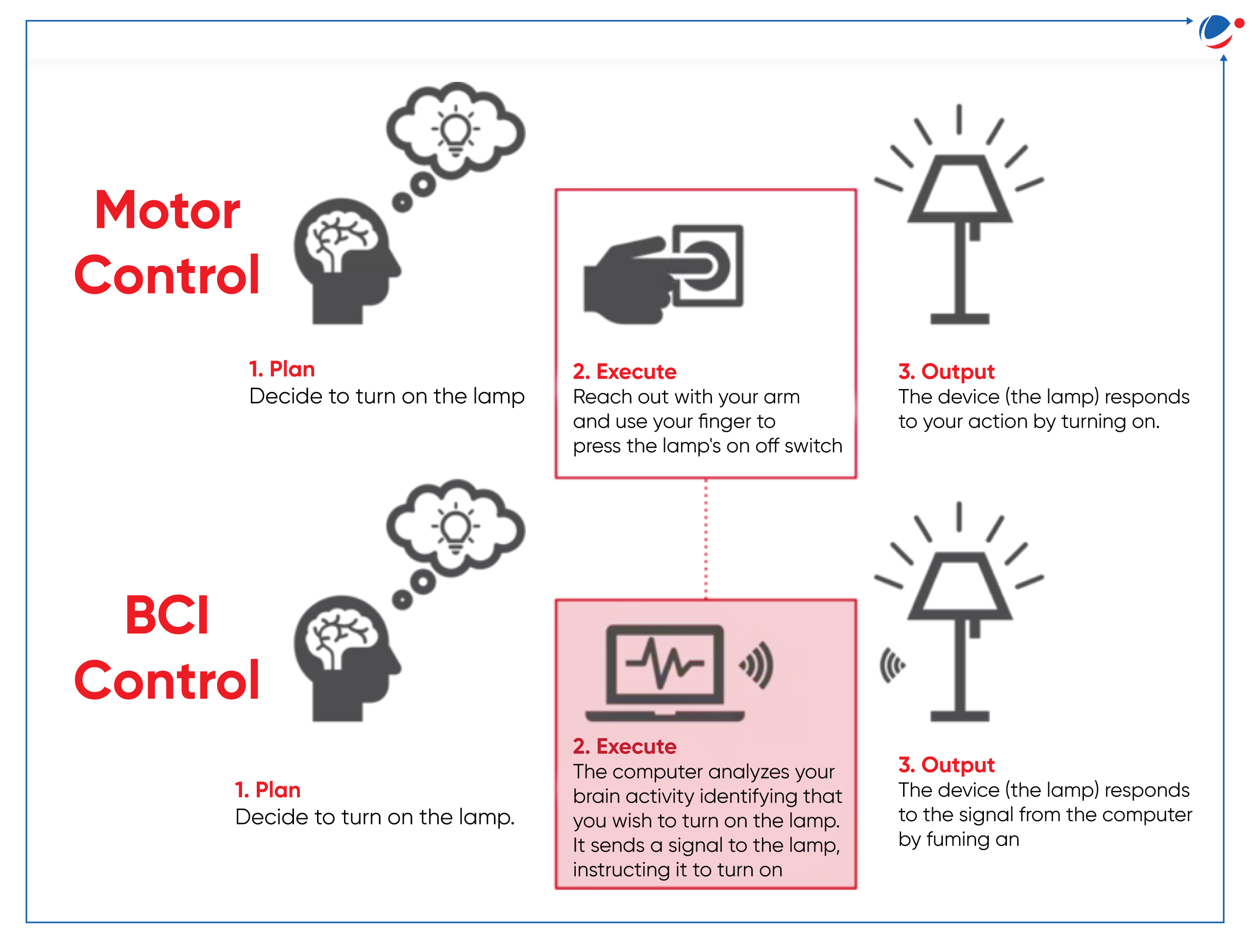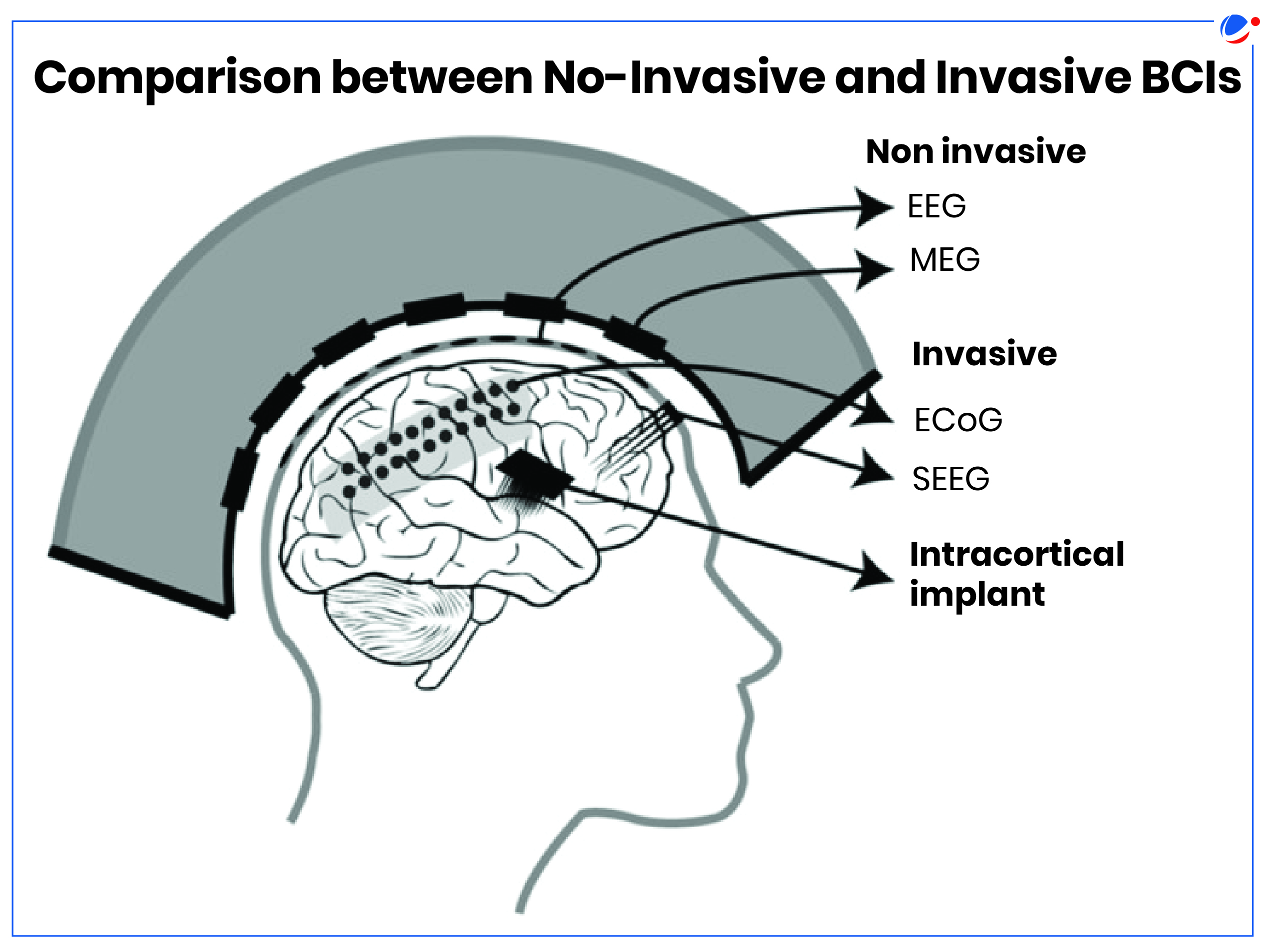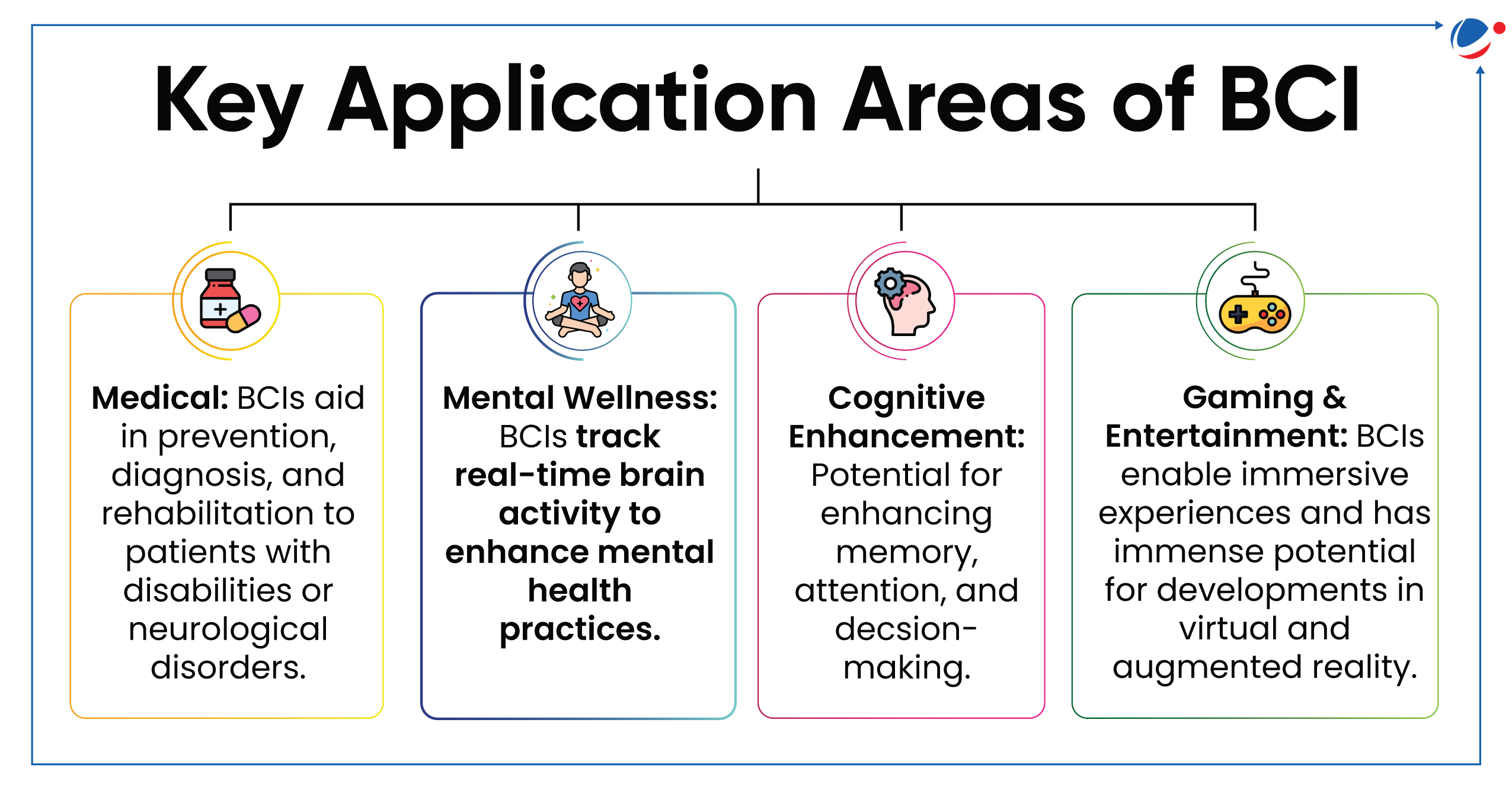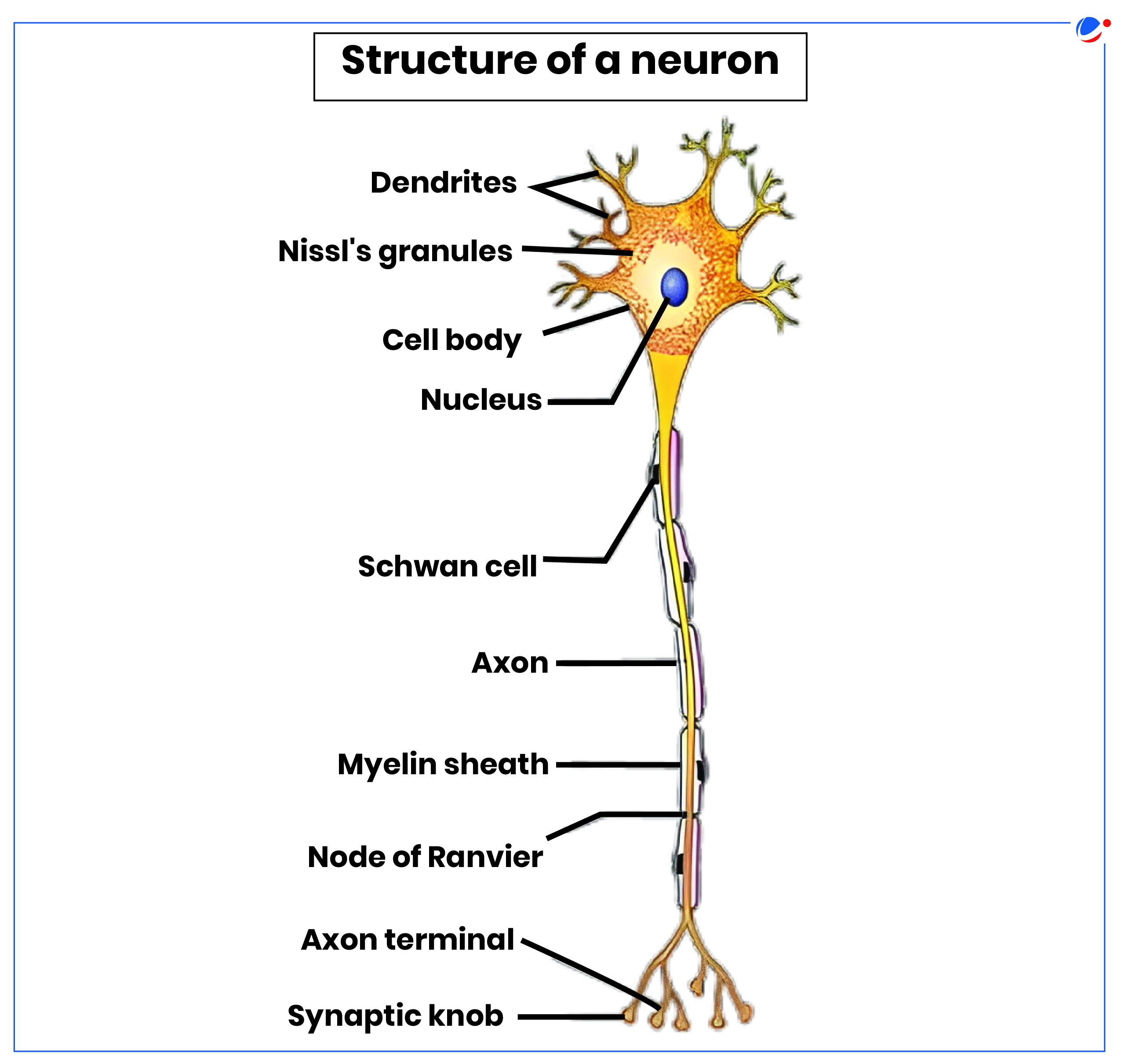Why in the News?
Recently Neuralink's 'Blindsight', a Brain-Computer Interface (BCI) implant, received "breakthrough device" status by US Food and Drug Administration (FDA).
More on the News
- The 'Blindsight Chip is aimed at helping blind patients (who have lost their both eyes and optic nerves) or those who have been blind from birth to regain their sight
- However, regaining of sight will only be possible if the visual cortex is intact.
- FDA's Breakthrough Device Designation (BDD) program helps speed up the development, review, and assessment of medical devices that can help diagnose or treat life-threatening or debilitating diseases.
About Brain-Computer Interface (BCI) implant
- A BCI is a computer-based system that acquires brain signals, analyzes them, and translates them into commands that are relayed to an output device to carry out a desired action (refer to the infographic below).

- Thus, a BCI has three main parts:
- Device to measure brain activity, It is usually in form of a headset that has specialized sensors
- A computer to process and analyze the recorded brain activity.
- Application/device to carry out command.
- Once the computer has 'determined' what the user wants to do, it will send a signal to application/device to carry out command.
- Another important part of BCI is feedback: Providing feedback helps user adapt to BCI system
- User and BCI work together: User, often after a period of training, generates brain signals that encode intention,
- And BCI, also after training, decodes the signals and translates them into commands to an output device that accomplishes the user's intention.
- Thus, BCIs do not use the brain's normal output pathways of peripheral nerves and muscles.
- This definition strictly limits the term BCI to systems that measure and use signals produced by the central nervous system (CNS).
- BCI do not read minds in the sense of extracting information from unsuspecting or unwilling users but enable users to act on the world by using brain signals rather than muscles.

Types of BCIs
- Invasive BCI (Brain Implants): Invasive BCIs are implanted directly into grey matter of brain during neurosurgery. Recorded brain activity is much stronger.
- E.g., Neuralink's Implant.
- Non-invasive BCI (Surface Detectors): Set of electrodes, known as an electroencephalograph (EEG) attached to scalp. Electrodes can read brain signals.
- E.g., Electroencephalography (EEG), Functional Magnetic Resonance Imaging (fMRI) etc
- Partially Invasive BCIs (Dura Mater Implant): Partially invasive BCI devices are implanted inside the skull but rest outside the brain rather than within the grey matter. They produce better resolution signals than non-invasive BCIs.
- E.g., Electrocorticography (ECoG), It records brain activity by placing electrodes in direct contact with cerebral cortex or surface of the brain.

Challenges in Brain Computer Interfaces:
- Technical Challenges: Inability to interpret complex neural patterns, weak brain signals & environmental interference etc.
- Invasive BCI can damage nerve cells and blood vessels, hence increasing risk of infection.
- Brain Tapping: Intercepting brain signals can compromise privacy, revealing emotions, preferences, and beliefs.
- Misleading Stimuli Attacks: Manipulating signals or feedback could lead to brain hijacking, potentially influencing behavior.
- Legal Barriers: Currently, no comprehensive legal framework governs the use of BCIs, particularly in terms of safety, efficacy, and data protection.
- Ethical concerns:
- Question of Informed consent, potential for stigma and discrimination, research ethics, compromised autonomy etc.
- Direct interaction between brains and machines brings may result in of cyborgization.
- Cyborgs can have a variety of enhanced abilities, including: Greater strength, improved senses, Computer-assisted brains, and Built-in weaponry.
Way- forward
- Transparency & Consent: BCI applications must adhere to privacy regulations ensuring informed user consent.
- Regulatory Oversight: Legal frameworks should restrict harmful BCI practices.
- Enhanced Security: Research is needed for advanced security measures, including cryptographic protection.
- Public Awareness: Educating the public about the risks and safety measures for BCIs is essential.
 Key Concepts
|




